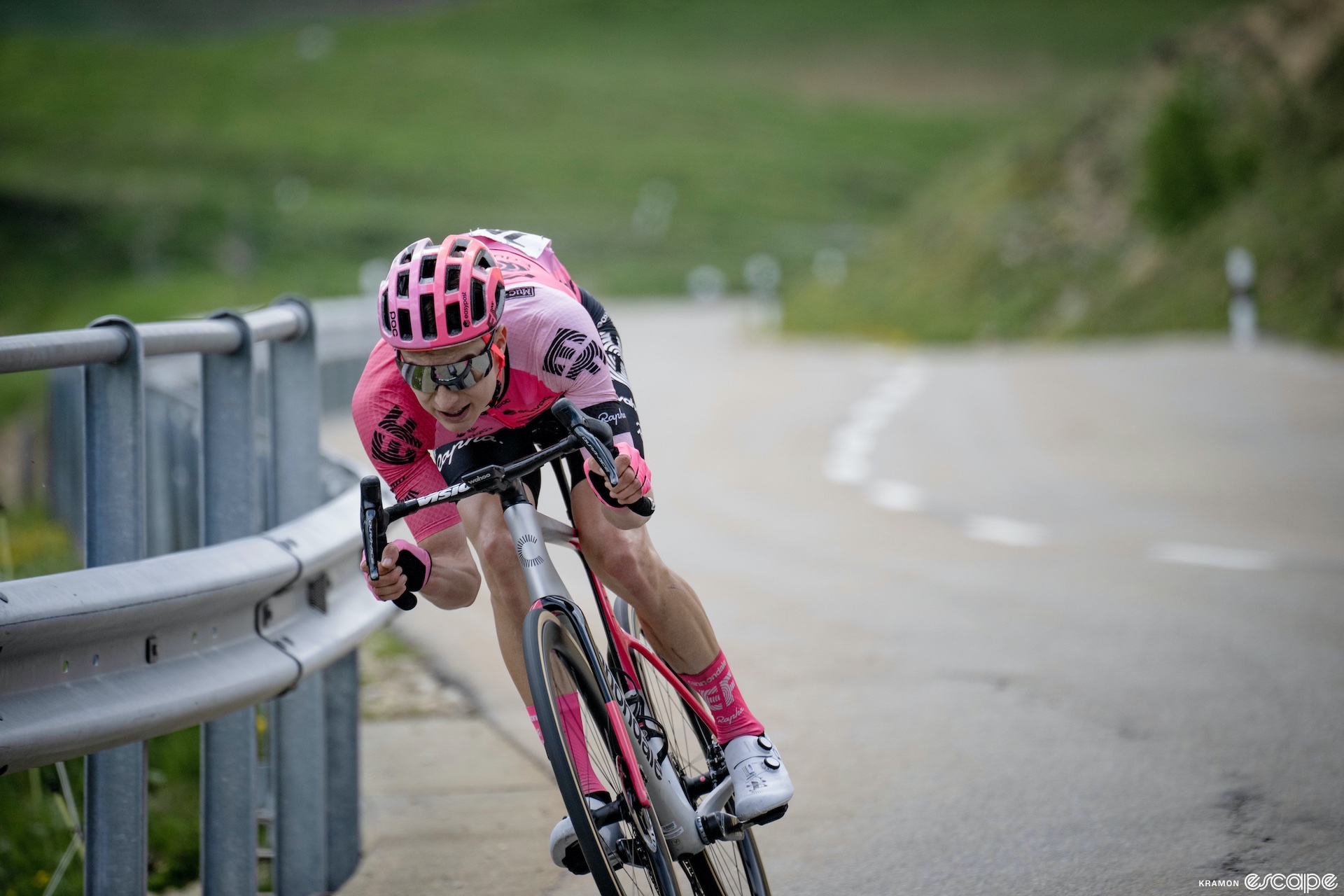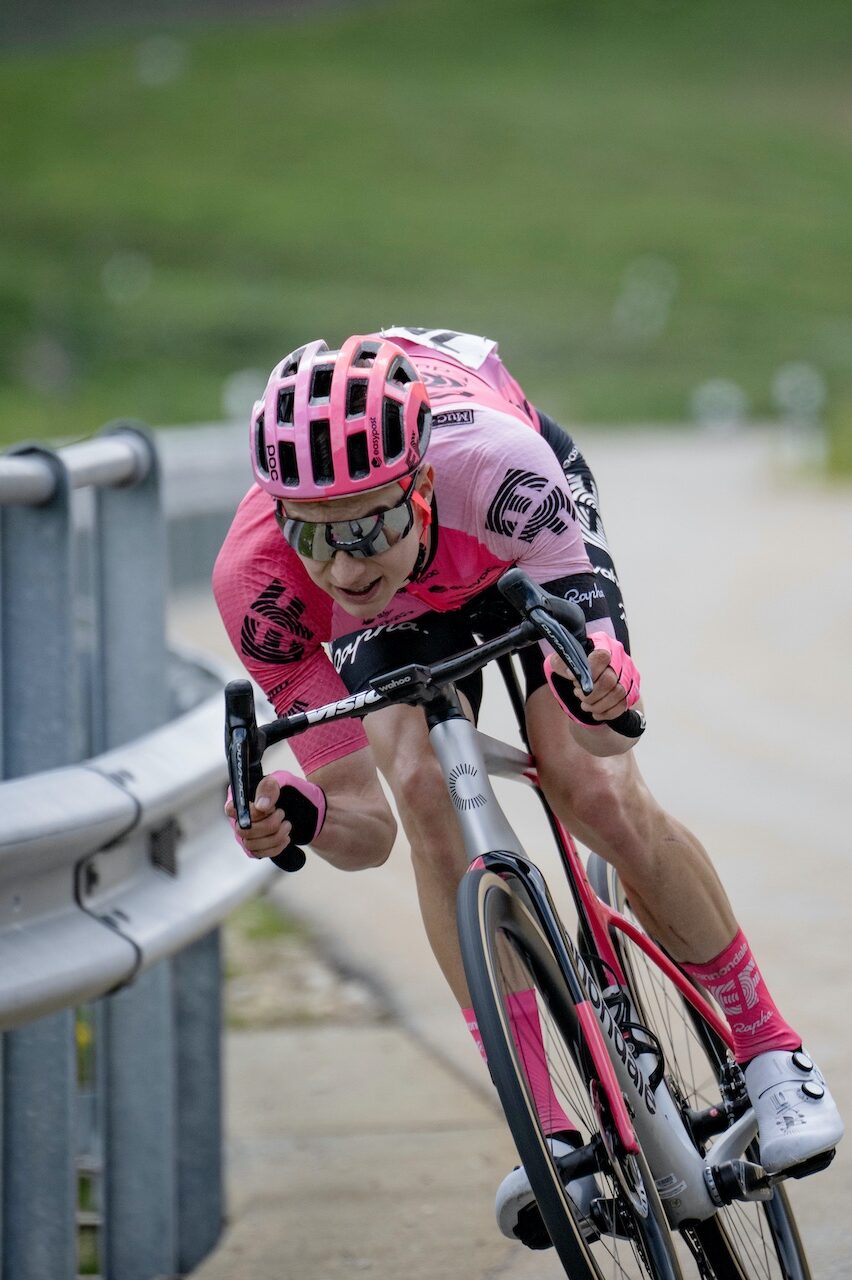As the 2024 Tour de France looms, most of the pre-race chatter is focused on the impending GC battle between favorites Tadej Pogačar (UAE Team Emirates) and Jonas Vingegaard (Visma-Lease a Bike), or whether Mark Cavendish (Astana-Qazaqstan) can outclass the likes of Jasper Philipsen (Alpecin-Deceuninck) to set a new record for Tour stage wins. On many of the next 21 days of racing, however, we are likely to see neither the GC stars nor the sprinters vying for victory.
For oh-so-many stages that are a little too hard for the sprinters but not quite hard enough for Pogačar and Vingegaard, we will instead be treated to a show as the breakaway riders take center stage.
Rather than waiting, waiting, waiting for the latter moments of a race to actually do something, at least a few breakaway hopefuls will almost always roll the dice and risk it all on a do-or-die early move – and every bike race is the better for it. Sometimes, they even win. Ahead of the most coveted stage wins of the season, Escape Collective spoke with experienced escape artist Neilson Powless of EF Education-EasyPost to get his insight on all things breakaway. What even is a breakaway? When does it form? How does it stay away and how do you actually win from the break?
Class is in session. Read on for Breakaway 101.
What is a breakaway and when does it form?
Sure, you probably know what a breakaway is, but it never hurts to define key terms. Put simply, a breakaway happens when a rider or group of riders “break away” from the main group of riders and head up the road. You’re more likely to hear the move called “the breakaway” when it comes early in the stage. Strictly speaking, a rider might be “breaking away” from the peloton with an attack in the last 10 km of a race, but you won’t often hear that move referred to as a breakaway – though there is no clearcut definition here and it’s all in the eye of the beholder.
Almost every pro race, whether it’s a one-day event or a stage in a stage race, will see an early breakaway form. Regardless of the chances that the riders up the road have of winning, the peloton and the attackers are often both happy to let a move go clear.
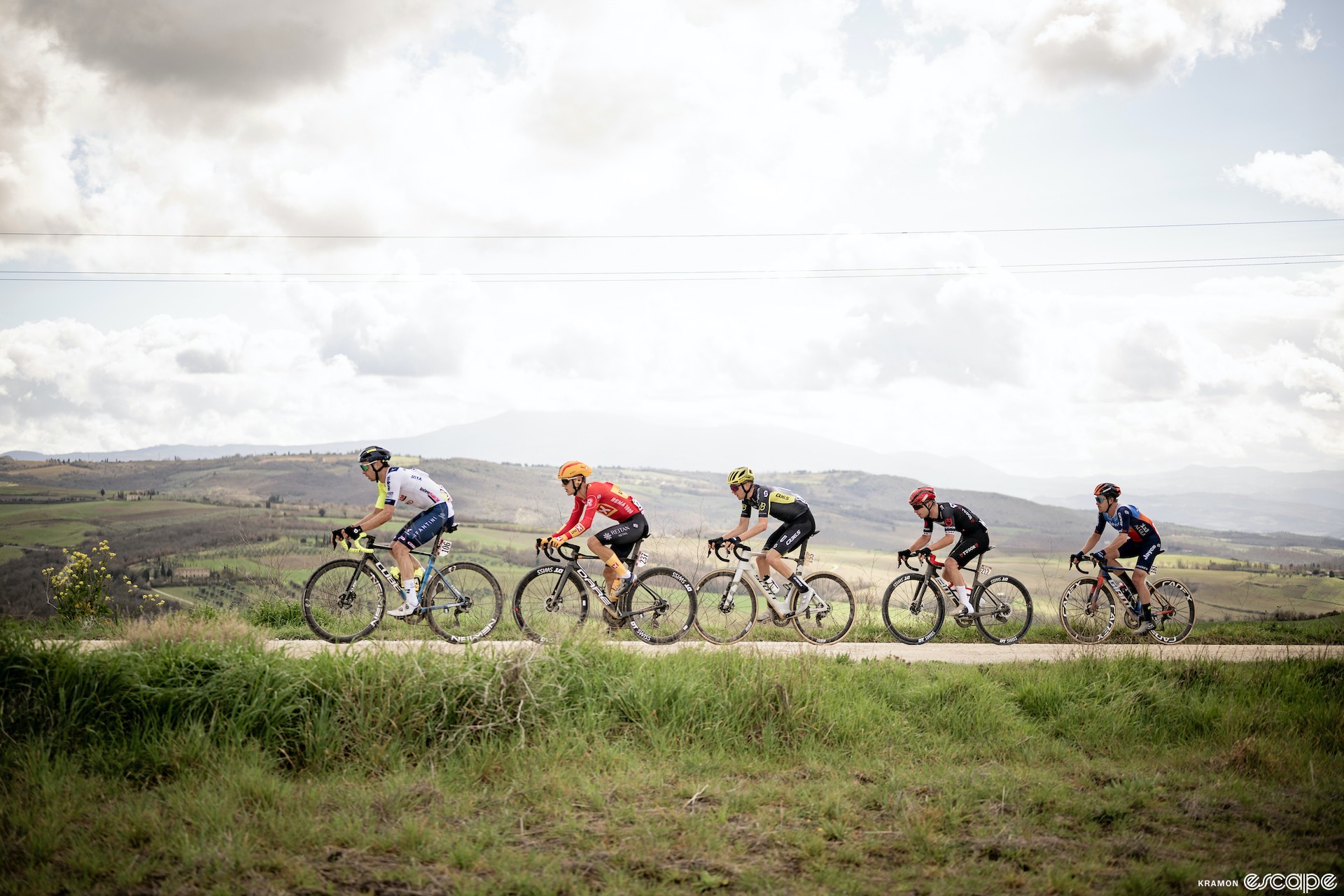
As Powless puts it, “this creates a smoother race for the riders in the peloton [and] for the race favorites in general, because if the gap is big enough, it dissuades a single rider from from trying to attack the peloton and create chaos. It sort of just organizes the race in some ways.”
Powless likens being in the breakaway to throwing a Hail Mary in American football (an all-or-nothing pass that rarely succeeds), which makes sense because the vast majority of riders will get nothing for their efforts in a breakaway, but sometimes, they will get that big win, and that makes it worth it.
Those big wins are likeliest on stages that have hills or small mountains, especially when there is no summit finish to close out the race. It’s a Goldilocks situation for the breakaway specialists. If the road is too flat, the sprinters’ teams will try (and almost certainly succeed, because the peloton’s drafting advantage is even greater on flat roads) to keep the breakaway in check and set up a sprint for the win. If the road is too mountainous, the teams of the GC contenders will set a hard tempo to wear out their rivals. Either way, it will be harder for the break. On those medium mountain stages, though, the escapees have a real chance.
How to get into the breakaway
Although it often happens before television coverage even begins, the battle to get into a breakaway can be fierce, especially on a day where the profile looks to favor the move. A race will often see multiple attempts to form a breakaway group before one actually sticks for more than a few moments, as riders attack and then are chased down by others in the bunch who are unhappy with the composition of the move for whatever reason.
With that in mind, getting up the road in the move that actually sticks takes strength, skill, and a bit of luck.
“There are points you can mark on the [course] map that you can think there’s a good chance that we’ll get away, whether that’s a climb or a narrowing [in the road] where half the peloton has to slam on their brakes,” Powless says. “Nine times out of 10 it’s really the peloton that kind of decides, ‘Are we going to try to shut this down, are we going to keep racing,’ and like how many guys actually want to keep racing? It’s almost all instinctive. And in the moment it’s really tough to say exactly how to make the break. It really just takes instinct.”
Even after a rider or riders have gotten off the front and a gap seemingly established, the move is sometimes brought back only to see another move form. For the bunch, the decision to stop chasing and finally let a break go comes down to competing motivations. If there is a rider up the road who could pose a threat to the GC battle, the GC teams will chase the move. If the move is full of talented riders on a day that the sprinters could win, their teams might chase an early move down rather than risk letting the gap get too big.
“If you’re the team trying to control the race, trying to deliver your leader to the finish as smoothly as possible, you really want as weak of a breakaway as possible,” Powless says.
“You want riders to get up the road to sort of calm things down, but you don’t want a group of guys going up the road that you’re worried you won’t be able to bring back later. It’s always a fight, it’s always like a chess match and the beginning is the teams controlling and the riders trying to break away.
“There’s always going to be riders that are labelled as a risk to the teams trying to control and basically, the teams controlling, they’ll have a list in their head of probably 15 riders that they definitely don’t want to get up the road – but the problem is, it’s really difficult to keep all 15 of those riders out, so there’s almost always bound to be a few in there.”
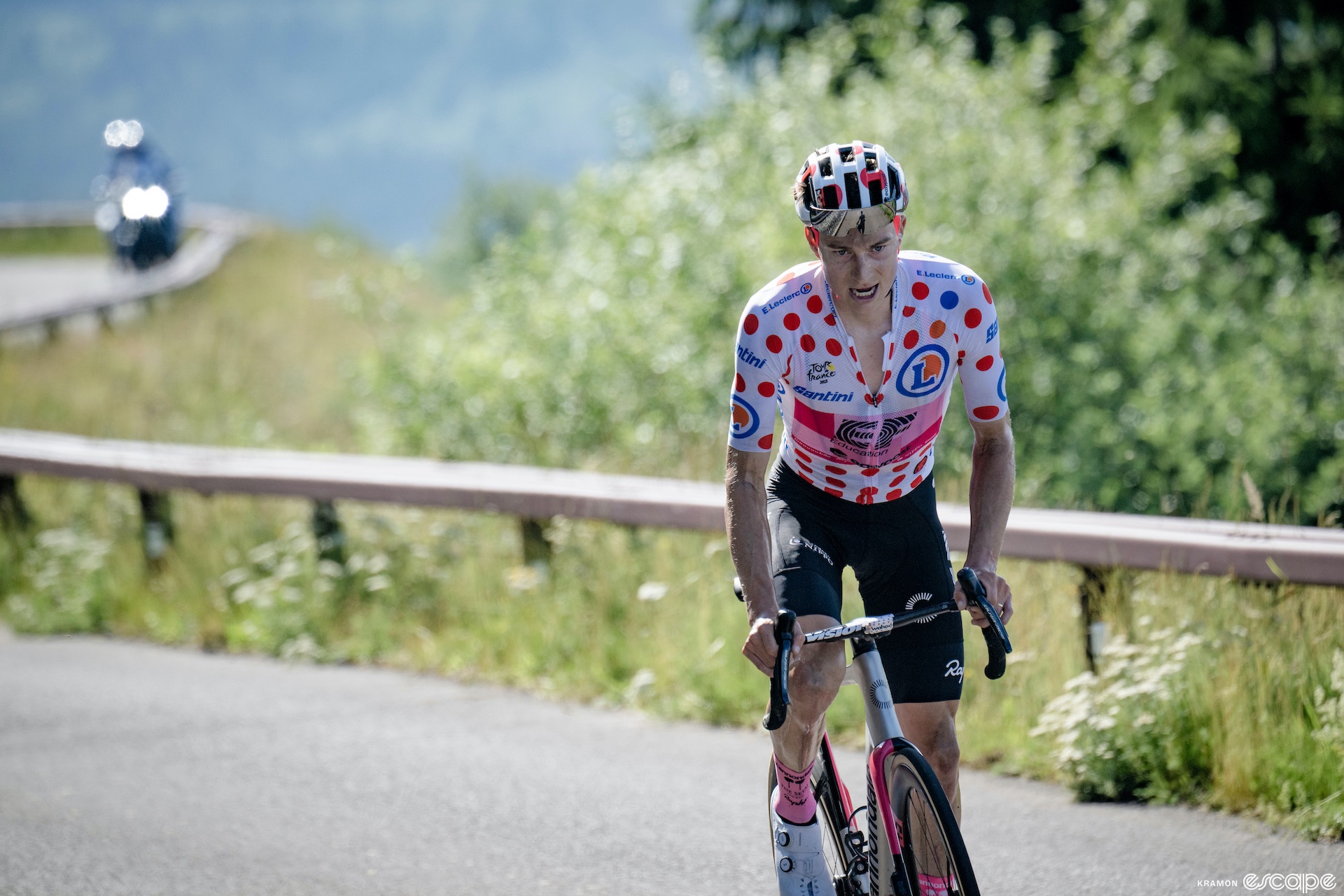
No matter how strong a move is or what the profile looks like, teams in the bunch that missed the break also might chase it down rather than see their chances at a win disappear, which is the other big reason why an early attempt to form a long-lasting breakaway might fail.
With all those factors stacked up against any individual attempt to form a successful breakaway, knowing which of those attempts might actually stick is critical. A smart rider will avoid wasting energy getting into a move that is doomed to be caught – either early on or later in the day – and therefore have more in the tank to join a subsequent breakaway that actually has a chance.
“That just takes years of racing and knowing every rider in the peloton, basically,” Powless says.
“At this point, I know pretty much every leader and every support rider in the peloton. I have a really good idea of what the limitations of each of those riders are, because I’ve raced with them so many times, and it’s just that subliminal knowledge that you have of knowing who’s chasing at this moment, or what’s happening in the race. It’s basically a thousand thoughts running through your mind in a split second and you either make that decision or not to try to break away.”
How to stay away
Making it into the big move of the day is, of course, only part of the battle. Most breakaways do not go the distance. Once you’ve gotten clear, staying clear requires more work, tactics, and luck.
As with getting away in the first place, a lot of it comes down to how the peloton decides to play things. If neither the sprinters nor the GC riders are interested in contesting the race, they might simply decide to let the break stay clear. Even if teams back in the bunch do decide to try to reel things in, they can still fail due to lack of cooperation, especially when the course is lumpy or full of twists and turns (or both) and thus harder to control.
In any case, the breakaway riders have some control over their destiny too. The most important thing is that everyone in the move shares the pulls at the front of the group, maximizing the collective firepower of every rider up the road.

That happens far less often than some might hope, thanks to the wide array of competing motivations that can exist within a breakaway. For starters, nobody wants to do work when they can try to save energy instead, and a smart breakaway rider will try to do just that. What’s more, riders can have a variety of reasons to be in the breakaway that do not include actually going for a stage win.
Some will be focused on getting to an intermediate sprint for sprint points. Others will be targeting the mountains points at KOM spots more than they actual stage. Still others will be in the break with an eye towards being available to help their GC leader later in the day. There is only so much a stage-hunting hopeful can do to overcome a lack of cooperation from breakaway companions – but it’s not impossible to cajole others into pulling.
“If you if you notice somebody just taking soft pulls or not taking equal shares, a lot of the time, just call that person on it,” Powless says. “Go and talk to them, or yell at them. And then yeah, just make sure they know that they’re not being as sneaky as they think, and a lot of times, they’ll sort of get back into the groove. But sometimes it takes a little more than just a word.”
The other option, of course, is to attack from the break – which leads us to the final lesson of Breakaway 101.
How to win from the breakaway
For all of the special skills and technical know-how required to get into the break and then survive out front, actually winning from the move is not all that different from winning any bike race. It comes down to knowing the course and your own skillset, and shooting your shot accordingly. Strong climbers will look for the steep stuff still, fast finishers will try to hold on to the end, and so on.
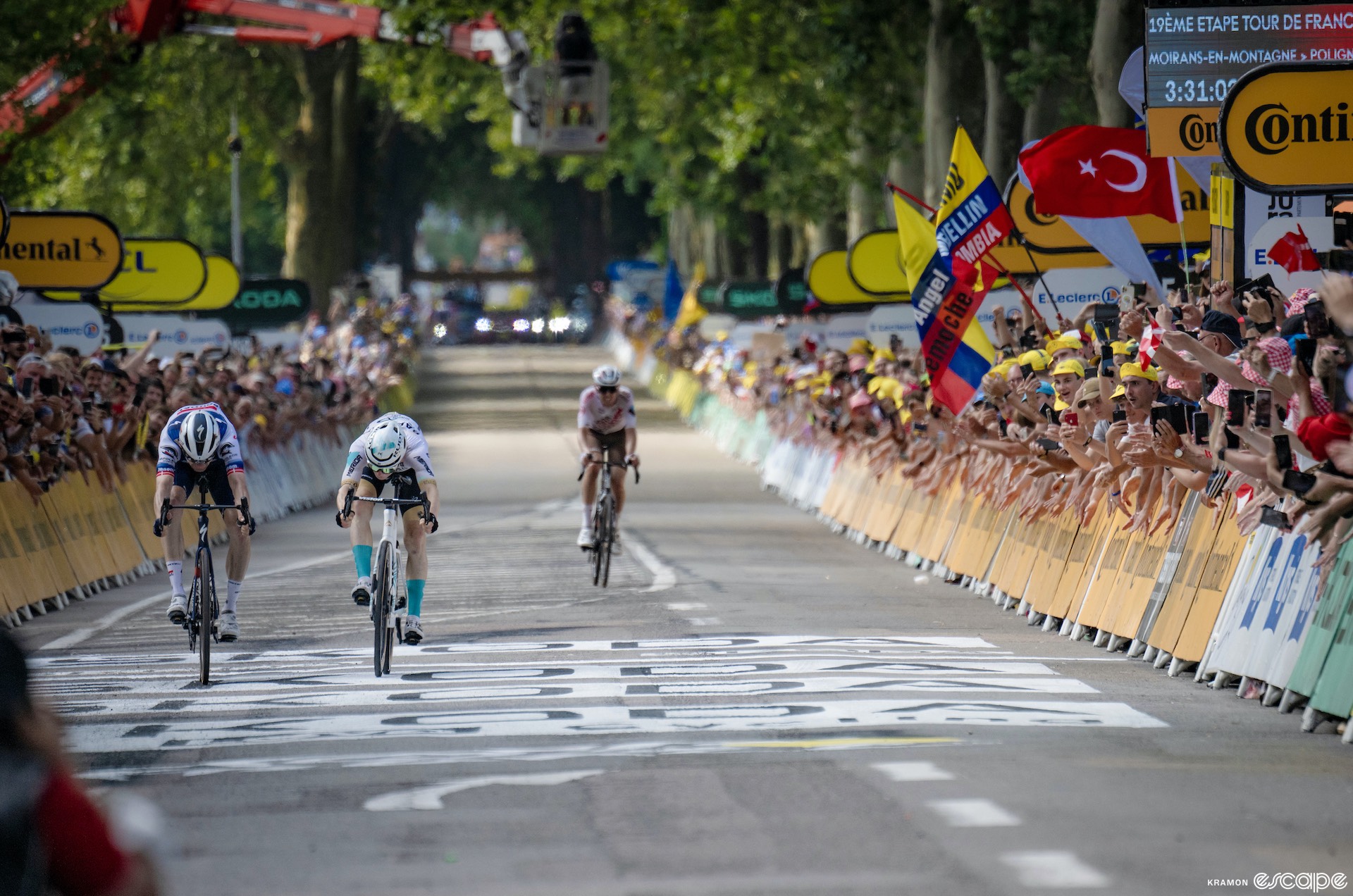
“If there’s a climb close to the finish, that’s always a surefire way to pull the strongest guy out of the breakaway,” said Powless, who is himself a strong climber and likely to look for those launching pads. “Winning solo is always better than leaving it to a sprint, because in a sprint, a 10- or 20-second effort, that can always go any direction, but if you’re alone, you’re gonna win it.”
Those who are neither uphill-inclined nor fast in a sprint can always wait for “a moment where the breakaway thinks they’re gonna make it and everyone’s going to start skipping pulls and pulling slower and the speed is going to go down, which leaves an opening to attack the breakaway,” Powless said. Those moments often come in the final kilometers of a race when riders start to look at each other only to have one of their number take advantage of the opportunity.
Whatever the plan is, a rider needs one to turn a long day off the front into a victory. It’s not easy, and so many riders in any given breakaway will come away with nothing – but every so often, all that hard work pays off.
In a matter of days, the Tour peloton will roll out from Florence on a 21-stage journey, and that journey will almost certainly start with a few riders trying their luck in an early breakaway. So too will the next stage, and the next, and the next … Most of those riders will come up short, day after day, but when one succeeds, you can be sure it will have been worth all of the effort.
Did we do a good job with this story?
